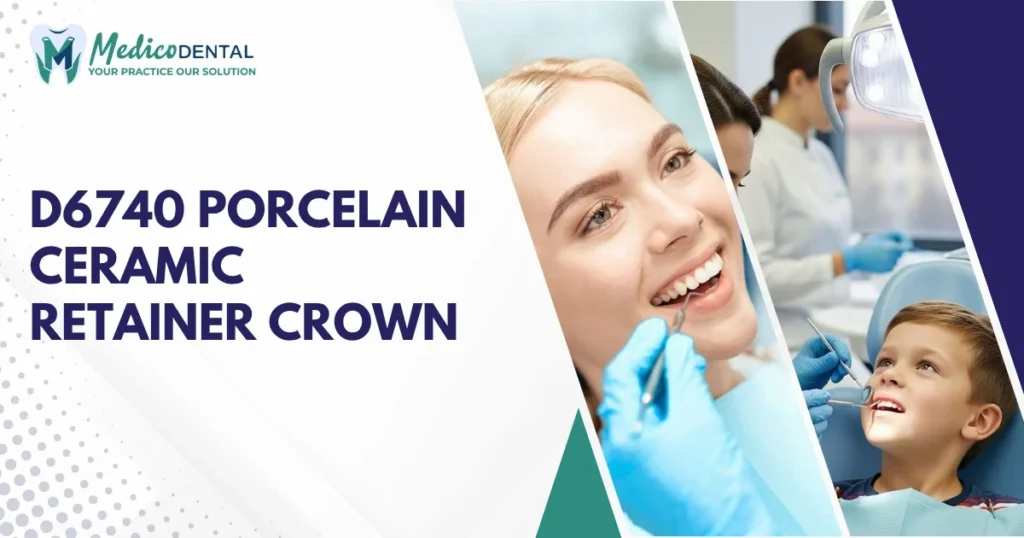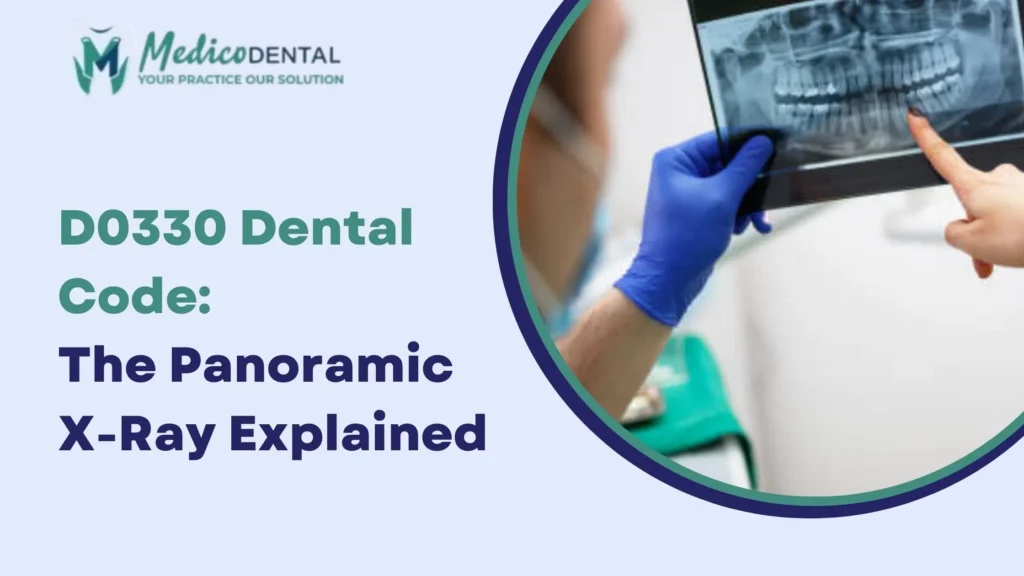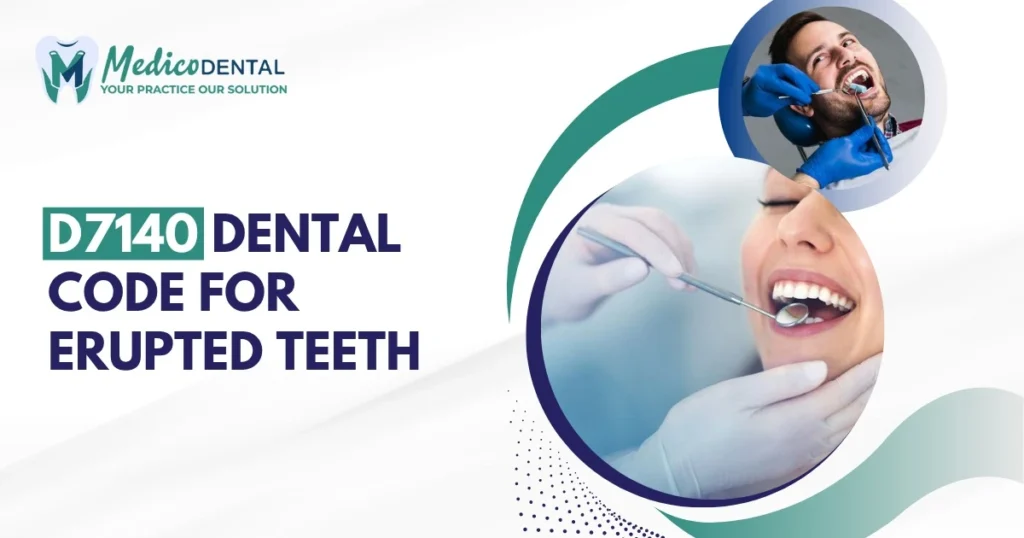The D6740 dental code refers to a porcelain or ceramic crown placed on a tooth to act as a retainer for a dental bridge. This procedure not only restores the tooth’s strength and function but also improves the overall appearance of the smile. Understanding this code helps patients, dentists, and insurance providers ensure accurate treatment planning and billing. It is commonly used when a strong, durable anchor is needed to support a fixed bridge.
What is the D6740 Dental Code?
D6740 is a dental procedure code used to describe the placement of a retainer crown made of porcelain or ceramic. This type of crown is typically placed on a tooth to support a dental bridge, ensuring stability and proper alignment. Understanding this code is essential for patients, dentists, and insurance providers to ensure accurate treatment and billing.
Definition and Purpose
The D6740 dental code refers to a porcelain or ceramic crown placed on a natural tooth to serve as a support for a fixed partial denture (bridge). Its primary purpose is to anchor the bridge securely, restore functionality, and provide an aesthetic solution that blends naturally with surrounding teeth.
When is D6740 Used?
This code is used when a patient requires a fixed dental bridge and needs a strong, durable crown as a retainer. It is commonly indicated in cases where a tooth is weakened, fractured, or has undergone root canal treatment, and a bridge needs to be securely attached for optimal chewing and appearance.
Procedure for D6740 Dental Code
Step by Step Treatment Process
Tooth Preparation
The dentist begins by examining the tooth and removing any decay or damaged portions. The tooth is then shaped to create the ideal contour for the crown, ensuring a snug fit that supports the bridge.
Taking Impressions
Once the tooth is prepared, the dentist takes detailed impressions of the patient’s teeth. These impressions are sent to a dental lab to fabricate a custom fit porcelain or ceramic crown that matches the patient’s bite and smile.
Fabrication of Porcelain/Ceramic Crown
At the dental lab, skilled technicians craft the crown using high quality porcelain or ceramic materials. This ensures that the crown is durable, natural looking, and capable of withstanding regular chewing forces.
Cementing the Crown
Finally, the dentist cements the crown onto the prepared tooth. The crown is carefully aligned, and bite adjustments are made to ensure comfort and function. Once placed, it serves as a strong anchor for the dental bridge.
Benefits of a D6740 Retainer Crown
Improved Stability for Bridges
A D6740 retainer crown provides a secure anchor for dental bridges, preventing movement and ensuring that the bridge functions like natural teeth.
Enhanced Aesthetic Appearance
Porcelain and ceramic crowns are color matched to the natural teeth, providing a seamless and attractive appearance that enhances a patient’s smile.
Long Term Durability
These crowns are highly durable, resistant to wear, and can last many years with proper oral hygiene, making them a reliable long term solution for tooth replacement.
Insurance and Billing for D6740 Dental Code
How D6740 is Billed
The D6740 code is dental billing and coding as a single crown procedure. Dentists submit this code to insurance providers to claim reimbursement for the cost of the crown and associated procedures.
Coverage Variations Across Insurance Plans
Coverage for D6740 may vary between insurance plans. Some plans cover the full cost, while others may cover only a portion or require a deductible to be met. It’s important for patients to verify benefits with their insurer before treatment.
Out of Pocket Costs for Patients
Patients may be responsible for co-pays or uncovered portions of the crown cost. Understanding potential out of pocket expenses beforehand can help avoid surprises and plan for treatment.
Common Situations and Patient Scenarios
Missing Teeth Requiring a Fixed Bridge
D6740 crowns are often used when a patient is missing one or more teeth and needs a fixed dental bridge to restore function. In these cases, the adjacent teeth are prepared to act as anchors (abutments), and the D6740 crown is placed to provide a strong and stable foundation for the bridge. This ensures the bridge does not shift or loosen over time, allowing the patient to chew, speak, and smile confidently.
Damaged or Weak Teeth as Bridge Anchors
Patients with weakened, fractured, or heavily restored teeth often require a D6740 crown to serve as a reliable support for a bridge. Using a durable porcelain or ceramic crown strengthens the anchor tooth, distributes bite forces evenly, and prevents further damage. This approach helps maintain long term oral health and bridge stability.
Cosmetic and Functional Considerations
D6740 crowns are chosen not just for their strength but also for aesthetic appeal. Porcelain and ceramic crowns mimic the natural color and translucency of teeth, making them ideal for visible areas in the smile. They restore both function and appearance, providing patients with a natural looking, comfortable, and durable solution.
Best Practices for Dentists and Billing Specialists
Documentation Tips for Accurate Claims
Accurate documentation is crucial for insurance reimbursement. Dentists should record the reason for the crown, tooth number, materials used, and the need for a bridge. Including pre-treatment photographs, X rays, and patient consent forms helps prevent claim denials and ensures a smooth billing process.
Avoiding Common Billing Mistakes
Common billing mistakes include using the wrong code, submitting incomplete documentation, or neglecting patient coverage details. Billing specialists should always verify insurance eligibility, confirm coverage for D6740, and ensure claims reflect precise treatment details. This reduces the risk of delays, denials, or patient dissatisfaction.
Key Differences Between D6740 and Other Crown Codes
D6740 vs. D2750 (Crown – Porcelain Fused to Metal)
While both crowns are used to restore teeth, the D6740 crown is all ceramic or porcelain, offering superior aesthetics, especially in visible areas. In contrast, D2750 crowns have a metal base fused with porcelain, providing extra strength but sometimes compromising natural appearance. D6740 is often preferred for patients who want metal free restorations.
D6740 vs. D2790 (Full Cast Crown)
D2790 crowns are made entirely of metal, offering maximum durability but lacking the natural look of porcelain. D6740 crowns provide a balance of strength and aesthetics, making them ideal for bridges in areas where appearance is important. The choice depends on patient priorities, location of the tooth, and functional requirements.
Conclusion
The D6740 dental code plays a critical role in restorative dentistry, providing strong, aesthetically pleasing crowns that anchor bridges securely. Proper use ensures patient satisfaction, functional success, and smooth insurance billing. For dentists, careful treatment planning and accurate documentation are essential, while patients benefit from durable, natural looking results that restore both smile confidence and oral function.
FAQs
Can D6740 be Used for Pediatric Patients?
Generally, D6740 crowns are rarely used in children unless absolutely necessary, such as for permanent teeth requiring bridge support. Pediatric dentists may choose alternative treatments suitable for a growing mouth.
How Long Does a D6740 Crown Last?
With proper care, a D6740 crown can last 10–15 years or longer. Regular oral hygiene, avoiding excessive force, and routine dental check ups contribute to longevity.
Is Follow Up Required After Placement?
Yes, patients typically require a follow up visit to check the fit, bite, and overall comfort. Adjustments may be made to ensure optimal function and aesthetics.
Can D6740 Be Replaced If Damaged?
Absolutely. If the crown chips, cracks, or loosens, it can be replaced with a new D6740 crown. Early intervention prevents damage to the underlying tooth and bridge structure.



